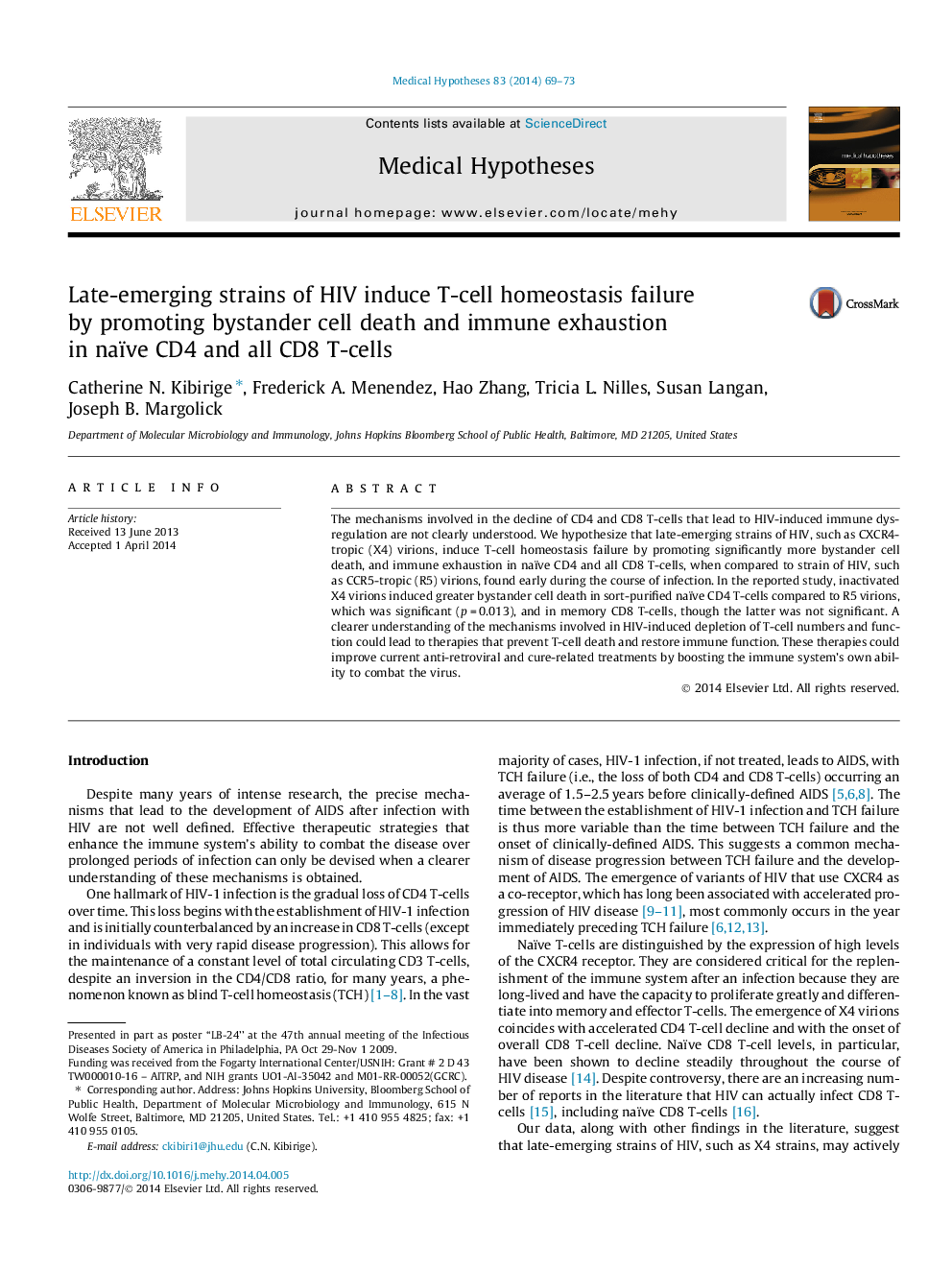| کد مقاله | کد نشریه | سال انتشار | مقاله انگلیسی | نسخه تمام متن |
|---|---|---|---|---|
| 2489060 | 1115012 | 2014 | 5 صفحه PDF | دانلود رایگان |

The mechanisms involved in the decline of CD4 and CD8 T-cells that lead to HIV-induced immune dysregulation are not clearly understood. We hypothesize that late-emerging strains of HIV, such as CXCR4-tropic (X4) virions, induce T-cell homeostasis failure by promoting significantly more bystander cell death, and immune exhaustion in naïve CD4 and all CD8 T-cells, when compared to strain of HIV, such as CCR5-tropic (R5) virions, found early during the course of infection. In the reported study, inactivated X4 virions induced greater bystander cell death in sort-purified naïve CD4 T-cells compared to R5 virions, which was significant (p = 0.013), and in memory CD8 T-cells, though the latter was not significant. A clearer understanding of the mechanisms involved in HIV-induced depletion of T-cell numbers and function could lead to therapies that prevent T-cell death and restore immune function. These therapies could improve current anti-retroviral and cure-related treatments by boosting the immune system’s own ability to combat the virus.
Journal: Medical Hypotheses - Volume 83, Issue 1, July 2014, Pages 69–73